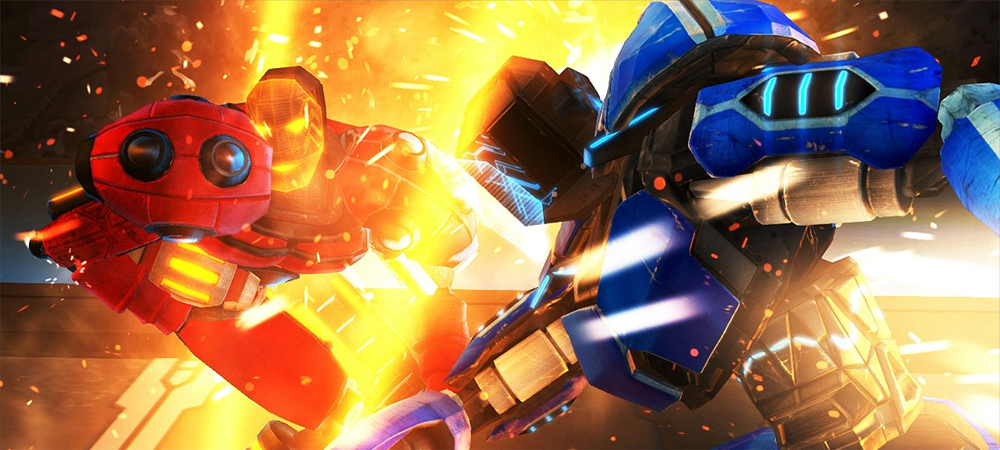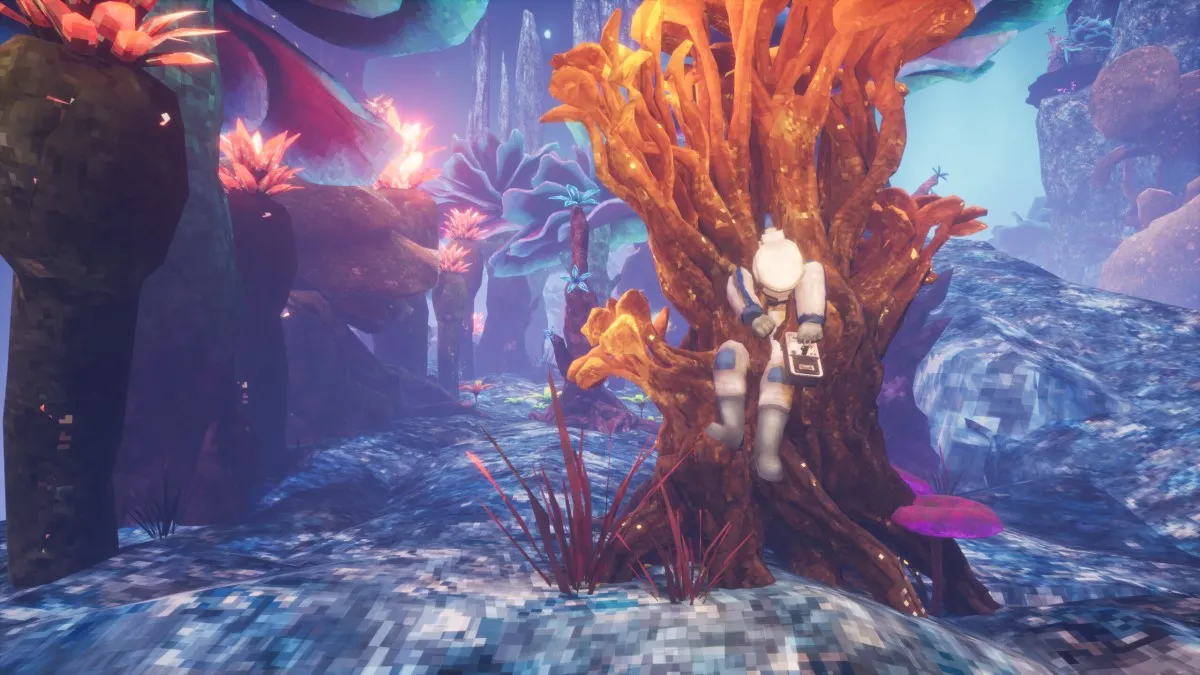Robo-sport-ball
Though it may be easy to see Frozen Cortex and immediately dismiss it because it seems to be rooted in American football (the best football), I want to make it clear that no American football or sportz knowledge is needed to enjoy Frozen Cortex.
Frozen Cortex is, first and foremost, a strategy game. It shares a lot with the developers’ previous title, Frozen Synapse, but is different enough to feel like a completely new game.

Frozen Cortex (Linux, Mac, PC [reviewed])
Developer: Mode 7
Publisher: Mode 7
Release Date: February 19, 2015
MSRP: $24.99 (contains two copies)
“Cortex” is a futuristic ball-sport played by robots. The rules are pretty simple: get the ball into the opposite endzone to score seven points. If a robot carrying the ball goes over one of the highlighted “Midzone” squares before scoring, two points are immediately added to that team’s point total. To win, a player must simply have more points than the other team and possession of the ball by the time the game is over, which happens after a certain amount of turns.
Once the ball is acquired, the player can either run or pass with it, and there is a limit to how many passes can be performed in a single possession. The ball can also only be moved forward at any point. Robots who aren’t moving are considered blocking, and any other robot who comes within close proximity of that motionless robot will be hit and deactivated for a short time.
Gameplay will be familiar to those who have played Frozen Synapse. Using the mouse, players can map out the path of every robot for the upcoming turn, and can even do so for the opposing team’s robots. Then, players can watch the events play out before committing to anything. Dedicated players will take their time and plot out many possible alternate scenarios before finally deciding on the best one. Once a series of moves is “primed,” it is sent to the opposing player (or AI) and will play out once both players are done.
The default rules can feel rather limiting, but it is possible to create a custom game so players can enjoy the game the way they see fit. In fact, my favorite moments from Frozen Cortex were from playing online custom game modes against friends, since we felt the original rule set was far too restrictive. However, doing this occasionally broke the game.
All of the single-player modes do use the traditional rules, so it is best for players to get accustomed to them and the strategies that go along with them. In the main game mode, Knockout, players are tasked with taking a team as far as possible without losing. One loss results in a game over and all progress is wiped, traditional to roguelike games. While it can be frustrating to get rather far and lose, the threat of losing everything forces the player to truly think about each move and puts way more importance on every single game compared to the other modes.
In between games, there’s the opportunity to add new players to the roster, each with their own stats. Want to have a team that is completely beast at blocking? Draft those players! Be warned though, there is almost always a downside to being very proficient in something. It can take some time to get a team that truly fits a playstyle, especially when a single loss will knock players out and the player pool is random, but it’s great to be able to personalize a team.
The Global Cortex League and Randomized League mode function similarly, except the latter gives the player a completely randomized team, as the name implies. These modes will keep track of players’ wins and losses, and the object is then to simply be the best out of the assortment of teams involved while continuously customizing the team.
In Global Cortex League, getting new robots involves spending money on them, and money is gained from either winning or placing bets. There is an underlying theme of corruption that takes place in both the Knockout and Global Cortex League modes, and this is the player’s chance to participate! It is always interesting to monitor how a team does and then feel confident enough to place a bet based on past performances. Just like real-life betting, I assume! Though once the betting screen is opened and closed, there doesn’t seem to be a way to bring it back up.
While playing, three narrators banter back and forth. In single-player, the opposing coach generally joins in the banter as well. Their banter is incredibly witty, and often elicits a good chuckle, though there is no voice acting. Their personalities become immediately apparent, and will even talk about previous matchups and statistics, just as expected from sports commentators.

The amount of options at any given time is rather small. It’s a pass-or-run type situation on offense most of the time, and it simply depends on the situation at hand. Once a player decides to run the ball, they must hold on to it until it’s either in the endzone or turned over. This makes running unlikely in a lot of scenarios, but Frozen Cortex is all about mind games with the opponent. “It’s highly unlikely they would run at this point” can mean “I should run it” for the offense. The play will end once the ball has traveled a certain amount of distance in the air, but not after a long run. This allows surprise runs to really be effective and takes some effectiveness away from long bombs.
The map plays a huge factor in strategy since placing a good blocker in an important intersection completely denies that area from a player. There are certain situations in which the ball carrier cannot score, forcing them to purposefully create a turnover. Players near a grounded ball will automatically run towards it, which can be used to the passer’s advantage in turnover situations. For example, if the defense has blockers set up at every possible route, the offense can pass it near a defender to force them to run towards it while they set up to be defense on the next turn.
On defense, it is all about placing blockers in key positions and forcing the opponent into as few options as possible. Oh, and always being aware of the “Hail Mary” passes. Often times I set up a strong defense and did not change it for a handful of turns, which makes the game feel overly simple at times. If a player is ahead by a certain score, the opponent may not be able to come back in time, making it useless to even try. In fact, the amount of “unwinnable” situations in Frozen Cortex I’ve encountered can easily remove a lot of enthusiasm from the game.
Its strategy isn’t too simple or too deep, but falls somewhere in the grey area in between. The amount of options are always limited, but how those options are utilized is what separates the scrubs from the champs. Often times I feel as if “I’ve got this,” only to be surprised by a huge pass that goes over every single one of my defenders. Other times I’ll pull off a run that not only ends up in the endzone, but travels over five Midzone areas as well, staging a huge comeback victory.
Players can also challenge each other online in a variety of modes. The variation generally comes in how player stats are distributed among each team’s players. The beauty of Frozen Cortex‘s multiplayer is that it is easy to play a game over a series of days, since it never requires both players to participate at the same time. This, alongside the lack of super-deep gameplay, make it easy to enjoy for those who tend to have a busy schedule in life.

Players can customize a team for use in multiplayer, including dividing stats specifically to certain robots as well as customizing the team’s look. This is really where some of the best matches come from: the team that players have invested in personally and have customized completely.
The music in Frozen Cortex is, as expected, perfect. It has catchy futuristic tones and really picks up at opportune moments throughout the game. The game’s animations truly steal the spotlight visually. I highly encourage all players to watch their matches after they’ve been completed. Watching the plays in a single series without player turns in between is an amazing spectacle.
It’s best to approach Frozen Cortex without any preconceived notions. It isn’t American Football and it’s not just Frozen Synapse with a ball. Frozen Cortex blends these things together and comes out as its own unique experience. There is a good balance of complexity here, so most players shouldn’t feel overwhelmed after grasping the basics. The AI does a great job of teaching the player the ropes, by virtue of kicking their butt, which allows them to acclimate quickly.
At times it can feel a bit helpless, as certain situations become unwinnable, but generally that boils down to the fault of the player earlier in the match. Frozen Cortex is a great competitive game to play either in short spurts or in longer sessions thanks to its turn-based playstyle, and has a very low barrier to entry for players.
[This review is based on a digital copy of the game provided by the publisher.]





Published: Mar 18, 2015 07:00 pm